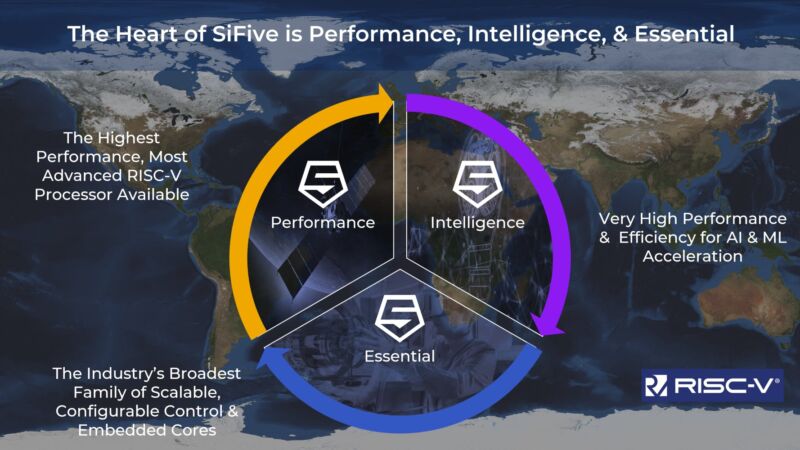SiFive’s brand-new P550 is one of the world’s fastest RISC-V CPUs

Enlarge / SiFive's "Essential" family is stripped down to the minimal configurations and performance necessary for standard microcontroller duty. "Intelligence" adds AI/ML acceleration, and the new "Performance" family offers just what it says on the tin. (credit: SiFive)
Today, RISC-V CPU design company SiFive launched a new processor family with two core designs: P270 (a Linux-capable CPU with full support for RISC-V's vector extension 1.0 release candidate) and P550 (the highest-performing RISC-V CPU to date).
A quick RISC-V overview
For those not immediately familiar with RISC-V, it is a relatively new CPU architecture which takes advantage of Reduced Instruction Set Computer (RISC) principles. RISC-V is an open standard specifically designed to be forward-looking and evade as much legacy cruft as possible. One example of this design is RISC-V's dynamic width vector instruction set, which allows developers to execute vector instructions on data of arbitrary size with maximum efficiency.
In traditional processor designs, a vector instruction has a fixed width tied to the hardware register size of the processor—for example, SSE and SSE2 allow use of a Pentium III's 128-bit registers, while making full use of an i7-4770's 256-bit registers requires a completely separate instruction set (AVX2) for the same mathematical operations. Moving up to an i7-1065G7's 512-bit registers requires yet another instruction set, AVX-512—again, for the same underlying mathematical operations.
Read 13 remaining paragraphs | Comments
from Tech – Ars Technica https://ift.tt/3zL5rsK
Comments
Post a Comment